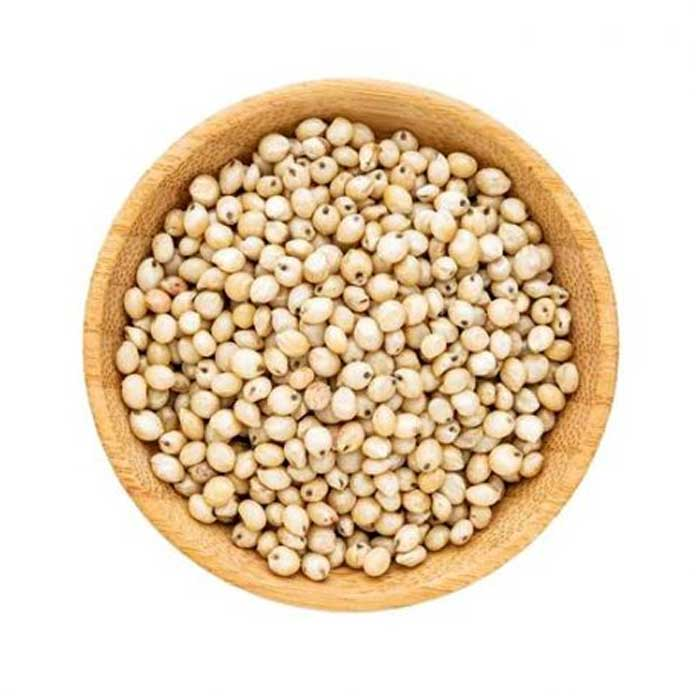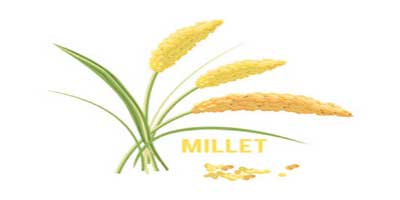

 Millet
MilletMillets are small-seeded grains that originated in Africa and are now widely grown as a staple grain throughout Africa, Asia, India, and the Middle East.

Millets are small-seeded grains that originated in Africa and are now widely grown as a staple grain throughout Africa, Asia, India, and the Middle East. There is evidence of millet cultivation in the Korean Peninsula between 3500 and 2000 BCE. Millets are mentioned in the Yajurveda, a very ancient religious book, which indicates that production and consumption of were an indigenous practice, especially in the Asian region (around 4500 BCE). Millets accounted for over 40% of all cultivated grains prior to the Green Revolution (contributing more than wheat and rice). However, after the revolution, rice cultivation has doubled and wheat production has tripled, making millets less valuable as source of food.
nclusion of Millet is a great idea for a variety of reasons. Sorghum (jowar), pearl millet (bajra), finger millet (ragi), and other coarse staples like maize, barley, oats, and the like may not match the grain quality of rice and wheat, but they surely outperform them in terms of nutritional value. These are now commonly referred to as “nutri-cereals.” While many millet grains have similar protein content as wheat, they are higher in vitamins, including vitamin B, iron, phosphorus, and a variety of other minerals. Furthermore, these are gluten-free substitutes for finer cereals, making them alkaline rather than acidic. That is why coarse cereals have long been a popular staple diet in many regions of the country, particularly in rural areas.
We have been consuming millets in various forms for decades in India. In the form of millet rice, rotis, bhakris, mudde (dumplings), upmas, dosais, and idlis. In fact, barnyard millet, popularly known as “vrat ke chawal,” is one of our traditionally recognised foods during fasts.
Millets are small-seeded grains that originated in Africa and are now widely grown as a staple grain throughout Africa, Asia, India, and the Middle East. There is evidence of millet cultivation in the Korean Peninsula between 3500 and 2000 BCE. Millets are mentioned in the Yajurveda, a very ancient religious book, which indicates that production and consumption of were an indigenous practice, especially in the Asian region (around 4500 BCE). Millets accounted for over 40% of all cultivated grains prior to the Green Revolution (contributing more than wheat and rice). However, after the revolution, rice cultivation has doubled and wheat production has tripled, making millets less valuable as source of food.
nclusion of Millet is a great idea for a variety of reasons. Sorghum (jowar), pearl millet (bajra), finger millet (ragi), and other coarse staples like maize, barley, oats, and the like may not match the grain quality of rice and wheat, but they surely outperform them in terms of nutritional value. These are now commonly referred to as “nutri-cereals.” While many millet grains have similar protein content as wheat, they are higher in vitamins, including vitamin B, iron, phosphorus, and a variety of other minerals. Furthermore, these are gluten-free substitutes for finer cereals, making them alkaline rather than acidic. That is why coarse cereals have long been a popular staple diet in many regions of the country, particularly in rural areas.
We have been consuming millets in various forms for decades in India. In the form of millet rice, rotis, bhakris, mudde (dumplings), upmas, dosais, and idlis. In fact, barnyard millet, popularly known as “vrat ke chawal,” is one of our traditionally recognised foods during fasts.